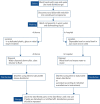Nebuliser hygiene in cystic fibrosis: evidence-based recommendations
- PMID: 32684992
- PMCID: PMC7341620
- DOI: 10.1183/20734735.0328-2019
Nebuliser hygiene in cystic fibrosis: evidence-based recommendations
Abstract
Nebulised therapies are extensively used in the daily therapeutic management of cystic fibrosis both for mucociliary clearance and for the management of chronic infections. Extensive developments have been made in relation to nebulised drug delivery mechanisms and drug formulations, and guidelines have been prepared that have addressed the appropriate use of such therapies. However, due to these developments, a plethora of nebuliser devices and drug chambers exist, and frequently, the limited guidance provided in relation to nebuliser hygiene is to follow manufacturers' instructions. Such instructions are inconsistent and at times confusing, translating to an increase in the burden associated with nebuliser maintenance. An evidence-based universal guideline relating to nebuliser care and hygiene is urgently required that is applicable to both at-home use and inpatient use. This article reviews the scientific literature in order to propose an evidence-based approach to nebuliser hygiene to ensure optimum drug delivery, and infection prevention and control.
Educational aims: To understand the reasons why nebuliser hygiene is important.To give an overview of the current nebuliser care instructions that have been described by manufacturers, societies and the scientific literature.To outline the current nebuliser hygiene practices used by persons with cystic fibrosis in the home and hospital settings.To highlight areas that need further evaluation to promote optimum nebuliser care.To establish an evidence-based guideline for nebuliser hygiene in relation to cystic fibrosis.
Copyright ©ERS 2020.
Conflict of interest statement
Conflict of interest: J. Bell has nothing to disclose. Conflict of interest: L. Alexander has nothing to disclose. Conflict of interest: J. Carson has nothing to disclose. Conflict of interest: A. Crossan reports speaker honoraria from TEVA and AstraZeneca, and sponsorship to attend a European cystic fibrosis conference from Chiesi, all outside the submitted work. Conflict of interest: J. McCaughan has nothing to disclose. Conflict of interest: H. Mills has nothing to disclose. Conflict of interest: D. O'Neill has nothing to disclose. Conflict of interest: J.E. Moore has nothing to disclose. Conflict of interest: B.C. Millar has nothing to disclose.
Figures
References
Publication types
LinkOut - more resources
Full Text Sources

